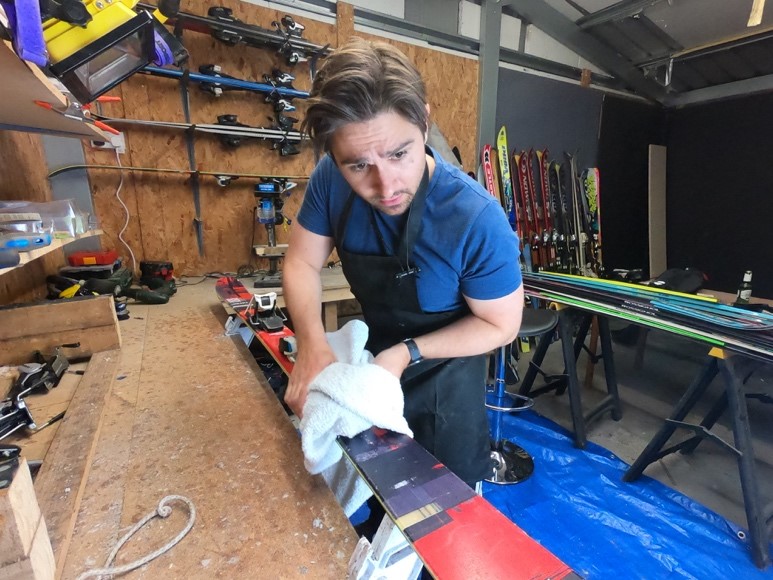10/05/2020 | Chilly Powder

As we come to the end of another ski season and most of us are trading ski equipment for BBQs and bicycles, we caught up with Joe Gotts from Batterski Ski Servicing for some expert advice on the best ways to maintain ski and snowboard equipment over the summer ...
1. Keeping dry
Good ski maintenance really starts from your last day on the slopes. When the holiday is over, many of us feel deflated about leaving the fresh mountain air and the potential thought of not skiing for another year. So much so, that we leave snowy remnants of the last run all over our equipment when packing them away. Rust is our equipment’s worst enemy, so its really important to dry down your equipment before making that homeward journey. I typically pack an old towel to fully dry my equipment before they are packed away.
2 Minor repairs
Summer is a great time to make any minor repairs to your equipment. Either do them yourself or take them to your local ski shop. I can assure you ski technicians have plenty of time to show skis some TLC during the summer compared to the peak season.
- Base Clean: Over time the base picks up all kinds of debris, dirt and old wax from mileage on the slopes. This is exacerbated at the start and end of a season when the snow cover is thin. Applying a base cleaner helps to lift debris out of the base, allowing your equipment to run faster when waxed again.
- Base Repairs. Its hard to avoid dings and scratches on the base of your equipment; getting these holes filled before you store them will help to protect the core of your skis or board from water damage.
- Topsheet Repairs. Damage to the top of skis and boards (known as the topsheet) can cause damage to the wood core structure, if the chips are deep enough. Repairs can be made by applying a strong adhesive, leaving to harden and removing any excess with a sharp chisel or knife.
- The Bindings. Some people still reduce the DIN setting to zero for the summer to protect the spring inside the binding. There is a lot of debate on whether this is still required on modern, robust bindings. However, there are no negative consequences in doing it; just remember to re-set them before your next trip!
3. Stoarge wax
A storage wax is where a large quantity of ski wax is applied to the base and edges of the equipment to keep the bases from drying out and the edges from rusting. This can be done at ski shops, or if you have a ski waxing iron and all-temperature wax you can try it yourself! Just remember to scrape the excess wax off before you hit the slopes again; wax is better than no wax, but too much wax can slow you down.
4. Boot care
Like your skis and boards, it’s a good idea to fully dry your boots before putting them away. Remove the linings if you're able to, to get them really dry. A top tip is to place silica packets in your boots to keep moisture, mould and odours at bay. Once dry, do up your boots so they hold their shape over storage.
5. Where to store equipment
Most seasonal sports equipment is stored all over the home; the attic, under the bed or in that unused shed in the garden. For skis and snowboards its best to find somewhere cool and dry to store them. Warm places can cause the bases to dry up and areas with damp, or fluctuating temperatures, can cause condensation leading to rusty edges. I would also advise removing ski ties; I’ve serviced lots of customers skis which have perfectly clean edges, except for rusty patches where the ski ties have been over summer. Finally, store your skis and board in a place where they can rest naturally with no pressure on them. Stop using your boards as coffee tables!
Now you’re all set, confident in the fact you have given your equipment all the TLC they need for hibernation. Now be patient and wait for next winter!
